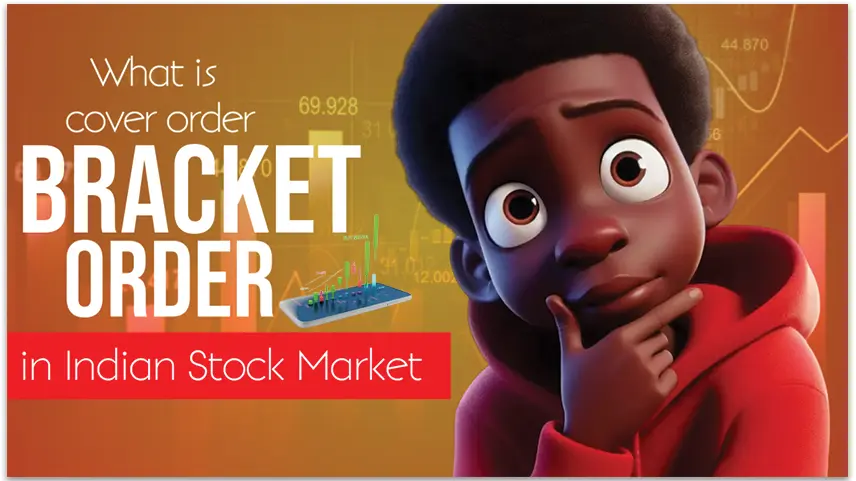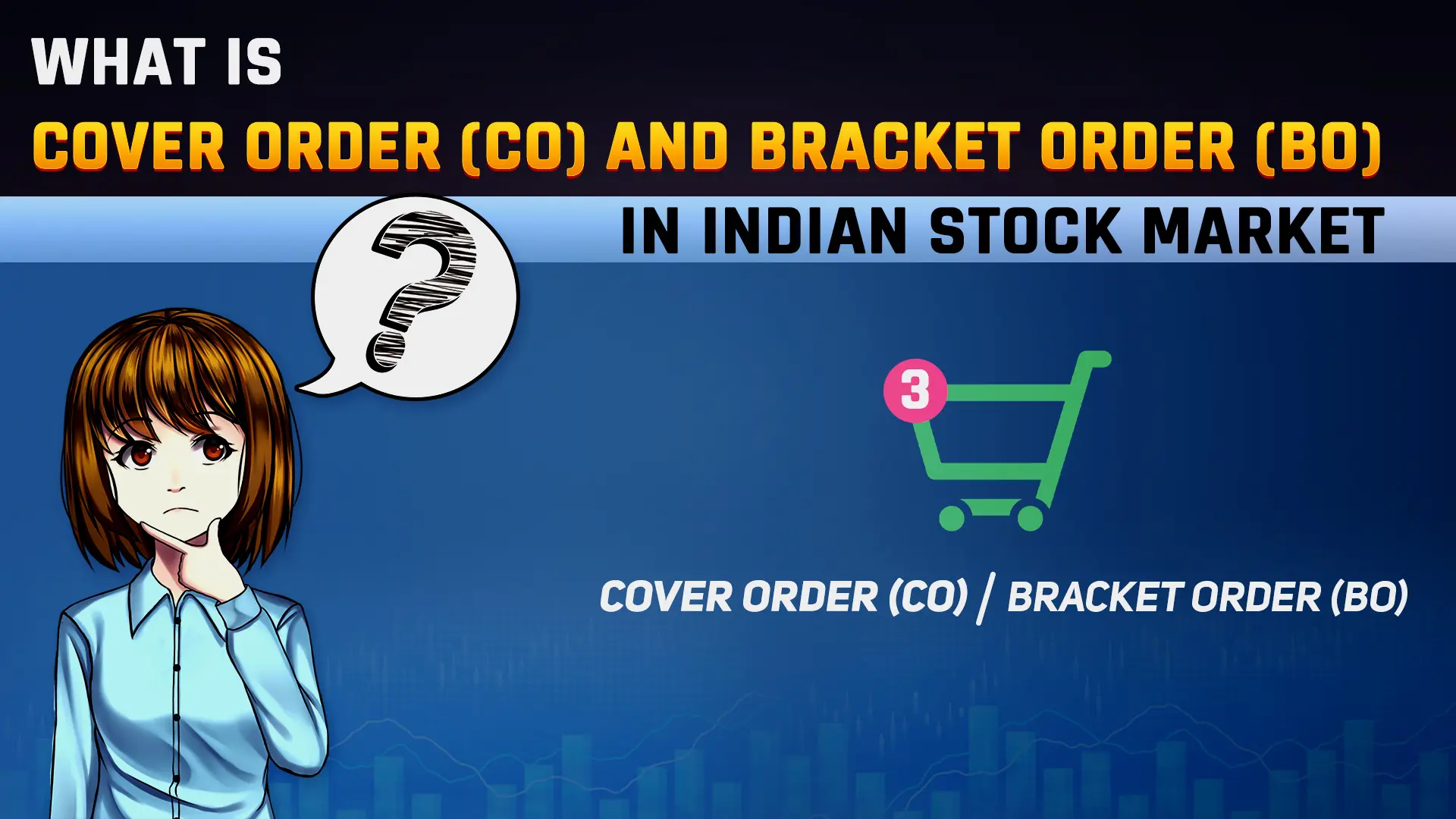What is Cover Order (CO) and Bracket Order (BO) in Indian Stock market
To buy or sell any stock in share market, one has to place an order to do the same. There are several types of orders in stock market but CO and BO are the most common used orders while placing orders. Let’s have a detailed read on both CO and BO.
What is CO?
CO stands for Cover order. It limits the risk of investors. Cover order contains two components i.e., 1) Market or Limit value and 2) Stop Loss value.

Market or Limit value is the value at which anyone choose to buy or sell any stock.
If you choose market order, then your order get triggered instantly. Market order ensures the execution of any order but does not ensure the order execution at any specific price.
If you choose Limit order, then you can buy or sell stocks at any specific price. All you have to do is to add a trigger price at which you want your order to get executed and your trade will get executed once the stock reaches that price.
Stop Loss (SL) limits your risk. By adding Stop Loss (SL) value, your trade will get square off at your Stop Loss value once the stock reaches that price.
Examples:
a) Buy order placed at Market value
Orders placed at market order will get executed instantly. To buy any stock, stop loss is set below the triggered price.
Suppose, you want to purchase 100 shares of any company. You place a buy order at Market value and you order get triggered at ₹610/share and in order to limit your risk, you set Stop Loss price at ₹590/ share. After this, if the price reaches your Stop Loss value, your shares will get sold automatically.
b) Buy order placed at Limit value
To buy any stock, limit order can only be placed at a price below the CMP (Current Market Price).
Suppose, the CMP of any stock is ₹610/share. Hence, you set a limit value at ₹605/share and SL value at ₹580. Then, your order will get triggered only when the price reaches ͅ₹605/share. Once your order is triggered, your shares will get sold automatically if the price reaches the stop loss value. And, in this way your loss is limited.
c) Sell order placed at Market value
To place sell orders, you have to short the shares. To sell or short any stock, stop loss is set above the triggered price.
Suppose, you want to sell 100 shares of any company. You place a sell order at market value and you order get triggered at ₹620/share and in order to limit your risk, you set Stop Loss price at ₹640/share. After this, if the price reaches your Stop Loss value, your order will get square off.
d) Sell order placed at Limit value
To sell or short any stock, limit order can only be placed at a price above the CMP (Current Market Price).
Suppose, the CMP of any stock is ₹620/share. Hence, you set a limit value at ₹625/share and SL value at ₹650. Then, your order will get triggered only when the price reaches ͅ₹605/share. Once your order is triggered, your shares will get square off if the share price reaches the stop loss value. And, in this way your loss is limited.
What is BO?
BO stands for Bracket order. Bracket order contains three components i.e., 1) Market or Limit value 2) Stop Loss value and 3) Target Value. In bracket orders, all the Buy and Sell rules are same as of cover order with addition of Target value.
Target value is the value at which you want to exit your trade with profit. In case of buy orders, target value is placed above the triggered price and in case of sell orders, target value is placed below the triggered price.
If you want to buy or sell any stock using Bracket order (BO), your order will get square off at either Stop loss value or target value. Once your order is triggered and after that if the share price reaches the target value first then your order will get square off at target value and if the share price reaches the stop loss value first then your order will get square off at stop loss value.
Also read: Stock Broker and Their Types – Explained

0 comments